Dial Corporation Uses Extron Equipment to Provide Any Signal Anywhere
Building a new corporate headquarters for a Fortune Global 500 company is no small task. And when that new facility encompasses nearly 350,000 square feet over four floors, an AV system that seamlessly ties together dozens of conference rooms, boardrooms, and other meeting spaces becomes critical to day to day operations and efficient, effective communication.
Such was the case as Dial Corporation, maker of such products as soap and air fresheners, planned a new, larger headquarters building in Scottsdale, AZ. Dial wanted the ability to network all of its AV-capable rooms together to act as a single, integrated system, allowing any signal to be sent anywhere in the new facility. This would be in stark contrast to the AV system in the company's older headquarters, which required moving AV equipment on carts from room to room as needed.
To accommodate the expanded role for AV in the new facility, Dial wanted a flexible, simple-to-use system for distribution of video, audio, and control. James Pitts, Design Engineer for AV integrator Level 3 Audio Visual, L3AV, knew from experience that a solution built around Extron twisted pair products would meet Dial's needs.
The Challenge
Plans for Dial's new headquarters building called for 36 conference rooms, an executive boardroom, a 75-seat training room, a cafeteria, fitness center, daycare center, and other common areas, as well as lobby and waiting room signage. The integrator needed to network AV for all of these rooms together so that any signal could go to any or all rooms. They would set up ten of the conference rooms initially, and prewire the remaining 26 for the future.
For room to room AV distribution in the new building, the signals would originate at an end point, be sent to the headend or central equipment room, and then distributed to any location desired. "One of our largest challenges was setting up a headend codec farm. This type of scenario requires complex signal routing for audio and video throughout the building," says Jeremy Elsesser, CIO/ COO for L3AV.
Twisted pair is an often utilized solution for videoconferencing applications, which can require long cable runs. Rather than place a codec in each individual conference room, a camera in each room can share in a codec farm, enabling the user to save money. Also, the user can add conference rooms without purchasing additional codecs. Once a camera is placed in the new room, it can then be queued to a codec when needed.
Dial's codec farm includes a group of 12 codecs located in the headend to manage Dial's videoconferencing needs. For example, if a videoconferencing codec is needed for one conference room, the user can request a videoconference using a touchpanel and the program indicates an available codec. The camera and microphone feeds from the conference room are then sent to that codec and the output is routed back into the conference room.
"We wanted a dynamically assignable codec farm in which any room could use any codec based on the programming queue of currently used codecs,"
Elsesser says. "This approach to large enterprise videoconferencing is an out of the box way to leverage shared conferencing resources and allow for cost effective meeting space growth."
All of Dial's displays would be widescreen with resolutions up to 1920x1080, and signal delay and latency had to be kept as close to zero as possible. With these goals in mind, distance was a major challenge. "Some of the high definition signals needed to run upwards of 700 to 800 feet," Elsesser says.
Another challenge was controlling every room separately, and getting video and audio without delay to the headend where it would be sent back, Pitts says. A final challenge was that Dial wanted to integrate as much of its existing equipment as possible into the new AV system.
The Solution
To satisfy Dial's requirements, L3AV designed the system around Extron twisted pair products. All interconnectivity between the individual rooms and the headend would be twisted pair. "I knew exactly what I was going to do from the start," Pitts says. "That was the easy part. I would use Extron twisted pair products and Extron enhanced skew-free UTP cable from Point A to Point B, something I've done successfully time and time again."
Pitts considers Extron's wide selection of twisted pair products to be a huge advantage over other companies. In a large distribution system such as Dial's, Extron has a product for every need, enabling AV designers to "right size" the twisted pair products at all points in the signal path. Designers have much broader freedom to specify the right transmitter and receiver for each signal type, and in the form factor needed for different environments in the facility.
Because Dial needed to send and receive any video and audio signal from room to room in its massive building, some of the cable runs reached 700 to 800 feet. "Twisted pair was especially beneficial in this application because of the sheer distances we were trying to push high-definition content," Elsesser says.
L3AV runs one single feed from each room to the headend. Since each videoconference room has two screens, a projection screen and an LCD, two feeds are run back, with a transmitter and receiver on each end.
Extron enhanced skew-free unshielded twisted pair cable is used for long distance signal transmission to and from the headend to eliminate signal time delays. Enhanced skew-free cable reduces crosstalk and ensures minimal distortion and improved integrity of the signal for improved picture quality. The use of this cable also eliminates the need to use skew compensation cables or skew equalizers, saving time and lowering installation costs.
Extron twisted pair products feature professional grade connectors and proper connectivity for any application. Elsesser says other reasons they decided to go with all skew-free twisted pair included the ease of cable selection and the convenience of having the same cable everywhere, as well as ease of termination. The time saved as a result of easy termination and not needing to make skew adjustments resulted in huge savings on labor.
"So we used twisted pair to send and receive video and audio signals from each individual room to the headend where the giant router could switch to and from any room, as well as to the codecs," Elsesser says.
The Extron Matrix 6400 was selected for master distribution of signals, in part because of its configurability and the fact that it can expand and adapt as Dial's AV system grows. Signal routing for the entire building is managed through the Matrix 6400.
Another Extron switcher, the MTPX Plus 3232, is used in the headend where it is dedicated specifically to routing camera feeds for the codec farm over twisted pair. It takes signals from cameras throughout the building and plugs them into their appropriate codecs. The signals from the codecs are then sent through the Matrix 6400 and back to the conference rooms. The MTPX Plus was chosen for its ability to route video signals, along with audio or RS-232 control signals, on a single twisted pair cable, enabling integrators to greatly reduce installation time and costs associated with rack space, cabling, and installation, when compared to traditional twisted pair matrix switching.
Also, each room at Dial needed to have its own individual system, so local signal routing for each of the conference rooms, the boardroom, the main training room, common areas, and the cafeteria is managed through CrossPoint ® Series ultra-wideband matrix switchers, which can function as standalone units but needed to be part of Dial's overall system. The CrossPoint 450 Plus 84 HVA [now the CrossPoint Ultra 84] matrix switchers receive signals from the Matrix 6400 and send signals from the various rooms to the Matrix 6400. The CrossPoint switchers, with ultra-wideband performance, ultraflat frequency response, and ultra-low crosstalk, are designed for the most demanding, very high resolution computervideo and stereo audio routing systems. Because of these features, they work well for Dial's system, which requires efficient, reliable operation at the highest computervideo resolutions without signal loss or degradation.

Transmitter and Receiver Form Factors Extron MTP transmitters and receivers are available in various form factors to provide integrators and installers with flexibility and freedom when it comes to deciding where and how to mount them. Many MTP transmitter models are available in wall-mount versions, as well as Extron's popular AAP and MAAP configurations. Some receiver models are small enough to mount behind a flat-panel display. This flexibility helps integrators and installers with the efficient use of costly rack space, effective cable management, access to controls and adjustments, and ease of mounting.
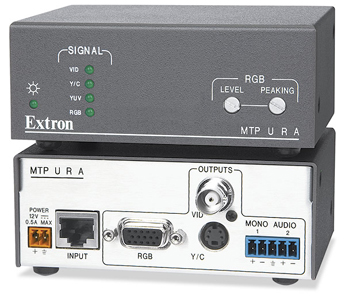
MTP U R Series Universal Receivers Extron MTP U R Series Universal MTP Twisted Pair Receivers accept a wide variety of video formats along with RS-232 and/or audio signals on a single CAT 5-type cable, providing dramatic cost savings with superior performance. With advanced features, including the ability to automatically route the incoming MTP signal to the appropriate video, audio, and RS-232 output connector, systems require only one receiver, one cable, and one MTPX or MTPX Plus matrix switcher output for each display. This can result in dramatic savings in cost, installation time, rack space, and equipment.
MTP U R Series Universal Receivers are fully compatible with Extron MTPX and MTPX Plus Series twisted pair matrix switchers and all MTP Series transmitters. The compact units can fit just about anywhere: in equipment racks, under tables, or next to a projector.
Tying it All Together
To tie all of the rooms together, including some at great distances, Pitts looked to the Extron MTP twisted pair product line. The fact that many of the products needed were available from one company, ensuring that they would work together, was a bonus. Extron MTP 15HD A transmitters in various form factors were used on the "front end" of the system to carry high resolution RGB, component video, composite video, and audio signals from each of the rooms to MTP RL 15HD A receivers on the input side of the Matrix 6400 located in the control room. To simplify signal flow back to the rooms, MTP T 15HD A transmitters were also used on the output side of the Matrix 6400. In this way, a single MTP cable carries high resolution RGB, component video, composite video, and audio signals to MTP U R A universal twisted pair receivers located near each display. The MTP U R A universal receivers automatically detect the video signal type and send it to the appropriate input on the display.
"Extron twisted pair provided the best solution for sending high definition video at absolutely huge distances," Elsesser says. "We've used Extron twisted pair products in many large video distribution systems and compared them to standard CAT 5 systems and other skew-free cabling systems, and we haven't been able to match the image quality that we get out of Extron's cable. So it was easy to choose Extron over any other solution, especially considering that we had some of the longest hauls experienced in any project."
Each conference room also includes an Extron furniture-mountable Cable Cubby® 200 that provides inconspicuous access to AC power outlets and data, audio, or video cables. Cables can be pulled through the openings in the adjustable panels of the Cable Cubby and then pushed back through to be stored out of sight until needed.
Extron PS 124 Multiple Output 12 Volt DC Power Supplies are used to reduce the number of power supplies needed in each room. They provide power for up to eight or more devices, resulting in power consolidation and centralized power management.
All of the rooms tied to the AV system can play a DVD or VHS tape, join or host a videoconference using Pan Tilt Zoom cameras, and display computer graphics and video from a laptop or a dedicated computer. Each room has a tabletop control interface, a motorized projection screen with an aspect ratio of 16:9, a 3000 lumen high definition projector, and a wall-mounted 40" LCD display for viewing videoconferences.
A Smooth Process
Due to the size and complexity of the new headquarters building, construction and installation took about a year to complete. However, careful planning and design by the integrator, combined with support from Extron, helped to ensure that the AV installation went smoothly.
"When you use the appropriate high-quality equipment and the manufacturer offers the kind of support that Extron does, you never have to worry about the equipment again," Pitts says.
Elsesser agrees. "When we come into extreme integrations like Dial's, we immediately turn to Extron because we know the engineering that goes into its products, and because of the support that Extron provides. We don't even entertain the idea of using other products when it comes to video distribution because we know that Extron products are going to work every single time."
Level 3 just spec'd another project that is very similar in nature to Dial's. "We did it the same way," Elsesser says. "Video over twisted pair, long-haul runs, all matrixed at the headend, codecs at the headend, and the ability to send and receive video over huge distances with minimum latency and no skew."
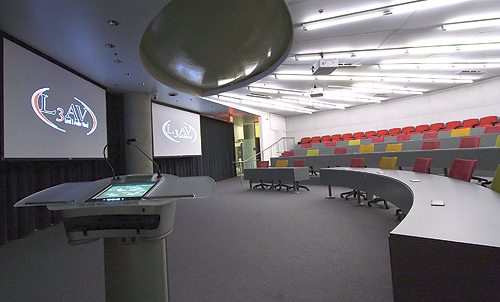
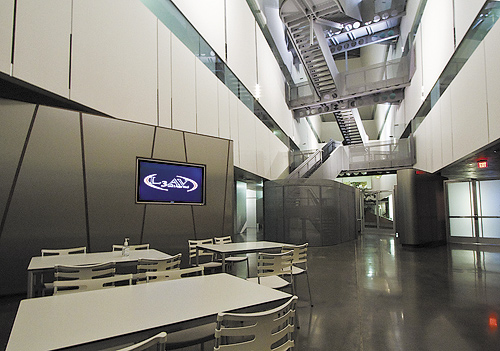
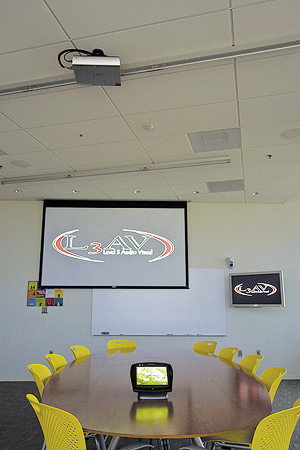
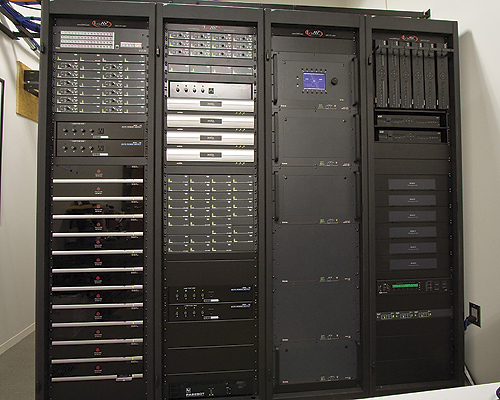
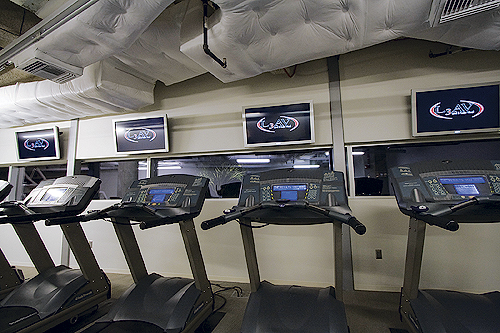
Learn More

Matrix 6400 Series
Fully Configurable Matrix Switchers from 16x8 to 64x64
MTPX 3232
32x32 MTP Twisted Pair Matrix Switcher for RGBHV, Video, Audio, and RS-232
CrossPoint Ultra 84
8x4 Ultra-Wideband Matrix Switchers for RGB and Stereo Audio
MTP 1500RL 15HD A SEQ
Extended Distance MTP Twisted Pair Receiver for VGA and Audio with Skew Equalization
MTP U R A
Universal MTP Twisted Pair Receiver for VGA, Video, and Audio
MTP RL 15HD A & MTP RL 15HD A SEQ
MTP Twisted Pair Receivers for VGA and Audio
MTP T 15HD A
MTP Twisted Pair Transmitter for VGA and Audio with EDID Minder®
Cable Cubby® 200
Furniture-Mountable Enclosure for Cables and One AC Power Outlet

 Chrome
Chrome
 Firefox
Firefox
 Edge
Edge
 Safari
Safari